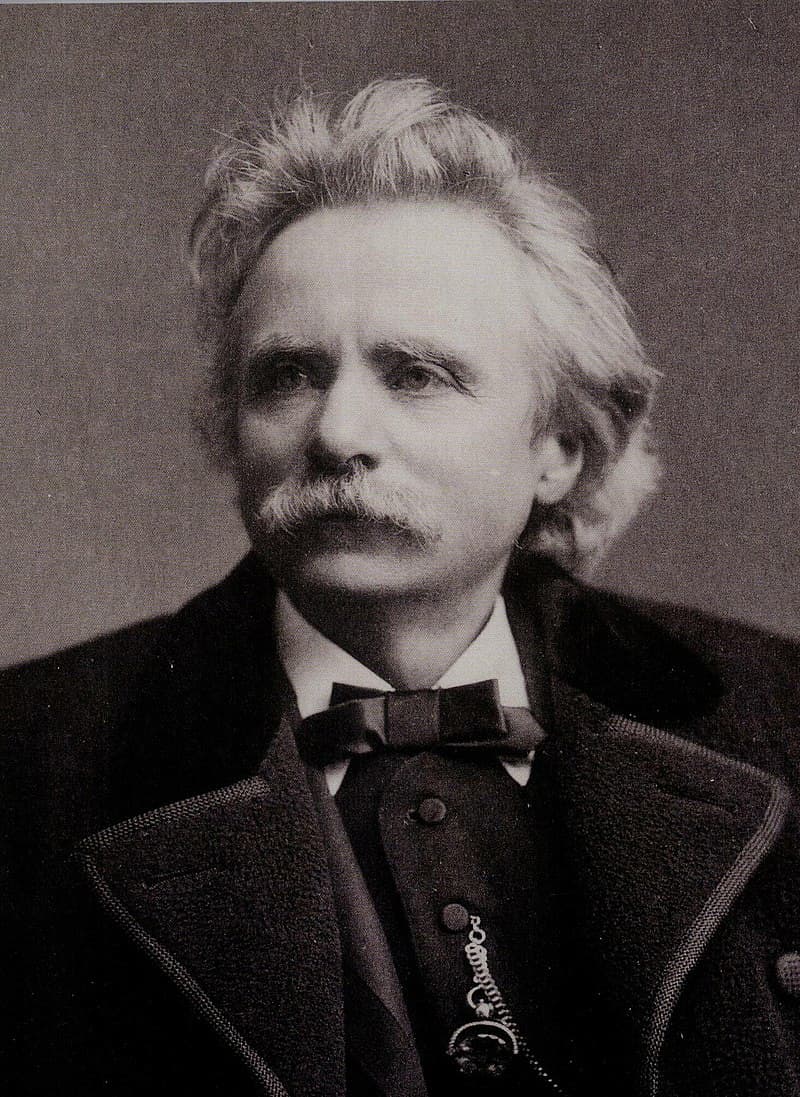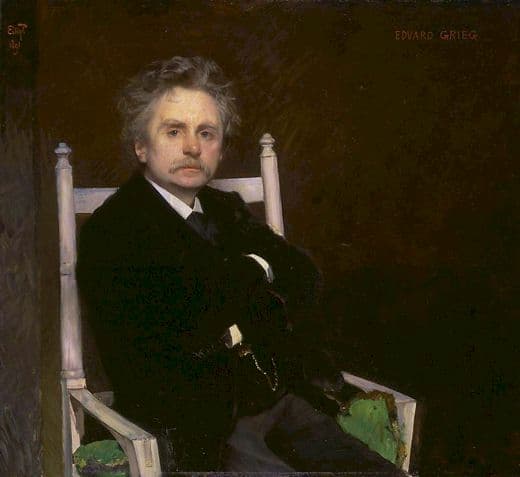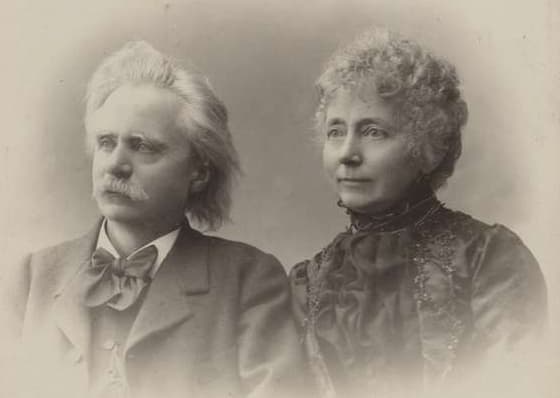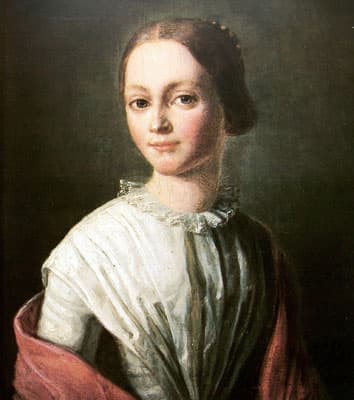A first work in a genre is often a hard slog in finding out how something works. Praised as ‘distinctive and admirable’ by Liszt, this string quartet by Norwegian composer Edvard Grieg (1843–1907) was the product of much hard work on Grieg’s part.

Edward Grieg, 1888 (Bergen Public Library)
Although titled String Quartet No. 1 in G minor, Op. 27, the work is actually his second stab at the genre. The first, now lost, was written in the early 1860s for his teacher, Carl Reinecke. His third string quartet was left incomplete at his death, so only the Op. 27 work stands for the genre.
The quartet was completed in 1878 after Grieg and his wife Nina had left Oslo for a farm in Hardanger. He described it to a friend as a work ‘…not intended to bring trivialities to market. It strives towards breadth, soaring flight, and above all resonance for the instruments for which it is written’.
The work had its debut in Cologne in October 1878, performed by its dedicatee, violinist Robert Heckmann, and his Quartet. The concert also included Grieg’s Second Violin Sonata, also with Heckmann and Grieg at the piano.

Eilif Peterssen: Edvard Grieg, 1891
The writing for the players includes double stopping, where two notes are played at once. Grieg’s normal publisher thought this would be too difficult for regular players and advocated for the work being rewritten adding a piano, creating a piano quartet or quintet. Grieg refused to rewrite the work and found another publisher for the quartet. After the success of that publication, Grieg’s normal publisher found that they could publish their own edition after all!
Grieg based his quartet on his song Spillemaend (Minstrel), and it appears as a support in all four movements.
Edvard Grieg: 6 Poems, Op. 25 – No. 1. Spillemaend (Monica Groop, mezzo-soprano; Love Derwinger, piano)

Edvard and Nina Grieg, 1899
The use of double stopping referred to above makes the texture of this quartet richer than usual. It also has an unusual use of homophonic passagework, odd in a genre that prides itself on being a literal musical conversation.
The song basis for the quartet is a text by Ibsen on the thoughts of a musician, separated from his love, who walks along a stream on a summer evening, hoping that a water spirit will bring his beloved to him. There’s an autobiographical reflection in this as Grieg’s wife Nina, with whom he had a difficult relationship, was away while he was composing the quartet. Nina Hagerup Grieg (1845–1935) was a skilled singer and pianist and played piano four hands with her husband. He also considered her the best performer of his songs.
The first movement starts with the motto theme from the song as a slow introduction before it’s transformed into the second theme at the Allegro molto.
Edvard Grieg: String Quartet No. 1 in G Minor, Op. 27 – I. Un poco andante – Allegro molto ed agitato (Emerson String Quartet)
The slow second movement Romanze also uses this motto theme, eliding the movements of the quartet.
Edvard Grieg: String Quartet No. 1 in G Minor, Op. 27 – II. Romanze: Andantino – Allegro agitato (Emerson String Quartet)
The third movement Intermezzo turns out to be an unexpected scherzo movement, detected when the trio second enters.
Edvard Grieg: String Quartet No. 1 in G Minor, Op. 27 – III. Intermezzo: Allegro molto marcato – Allegro agitato (Emerson String Quartet)
The final movement, like the first movement, opens with a slow introduction before accelerating into a final dance. The G minor start becomes a G major, optimistic ending. Perhaps the water spirit will deliver his beloved after all!
Edvard Grieg: String Quartet No. 1 in G Minor, Op. 27 – IV. Finale: Lento – Presto al saltarello (Emerson String Quartet)
After Beethoven’s phenomenal late quartets (opp. 127, 130, 131, 132, 135), written in 1825 and 1826, left his successors in a quandary. The works were not understood until many after Beethoven’s death, with composer Louis Spohr calling them ‘indecipherable, uncorrected horrors’. Now, however, they are considered among the greatest musical compositions of all time.
Debussy’s sole String Quartet (also in G minor like Grieg’s) was completed in 1893. It pushed the quartet out of the concept of a conversation between players and into his world of sensuality and impressionism.
Grieg’s work lies between the two. Adventurous and technically demanding writing, matched with Grieg’s desire for a Norwegian sound gives us a new world for the string quartet.
For more of the best in classical music, sign up for our E-Newsletter



